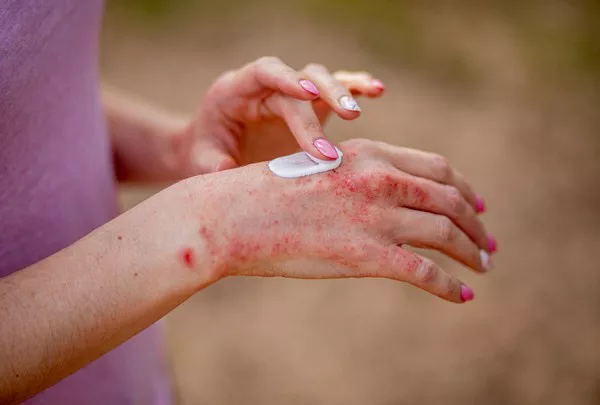Vitiligo is a chronic skin condition that causes the loss of skin pigment, resulting in white patches on different parts of the body. One area where vitiligo can be particularly noticeable and distressing for patients is on the lips. People often wonder if vitiligo on the lips can be cured. While there is no definitive cure for vitiligo, including vitiligo on the lips, there are several treatments available that can help manage and reduce its appearance. In this article, we will explore what vitiligo is, its causes, and the different treatment options available for those who have vitiligo on their lips.
What Is Vitiligo?
Vitiligo is a skin disorder where the cells responsible for producing melanin (the pigment that gives skin its color), called melanocytes, are destroyed. This causes depigmented patches to form on various parts of the body, including the lips. Vitiligo can affect people of all skin types and ethnic backgrounds. It is estimated that about 1% of the global population has vitiligo.
The condition can be classified into two main types:
Segmental vitiligo: which affects only one side of the body and usually appears at a younger age.
Non-segmental vitiligo: which appears on both sides of the body and is more common.
Vitiligo is not contagious and does not cause physical harm, but it can significantly impact a person’s psychological well-being, especially when it affects visible areas like the face and lips.
SEE ALSO: The 7 Best Vitiligo Cover Cream
Causes of Vitiligo on the Lips
The exact cause of vitiligo is not fully understood. However, research suggests that it is an autoimmune disorder, where the body’s immune system mistakenly attacks the melanocytes in the skin. Several factors may contribute to the onset of vitiligo, including:
Genetics: Family history plays a significant role in the likelihood of developing vitiligo. If someone in your family has vitiligo, there is a greater chance that you might develop it too.
Autoimmune disorders: People with vitiligo may also have other autoimmune disorders, such as thyroid disease, type 1 diabetes, or rheumatoid arthritis.
Stress and trauma: Emotional stress or physical trauma to the skin, like sunburn, can trigger vitiligo in some individuals.
Oxidative stress: An imbalance between free radicals and antioxidants in the body may contribute to the destruction of melanocytes.
Chemical exposure: Certain chemicals or products, especially on sensitive areas like the lips, may cause depigmentation.
Symptoms of Vitiligo on the Lips
The primary symptom of vitiligo is the appearance of white or light-colored patches on the skin or lips. In the case of the lips, the areas affected by vitiligo will have a stark contrast to the natural color of the lips. These patches may vary in size and may spread over time.
Some people with vitiligo on the lips may experience:
- Loss of pigment in the lips, creating a noticeable difference between the lip color and surrounding skin.
- Depigmentation in the corners or edges of the lips.
- Gradual spread of vitiligo to other parts of the body, such as the face or hands.
Can Vitiligo on Lips Be Cured?
As of now, there is no cure for vitiligo, including vitiligo on the lips. However, treatment can help manage the condition and, in some cases, restore some of the pigment to the affected areas. The effectiveness of treatment varies from person to person, and results may take time.
Treatment Options for Vitiligo on Lips
Several treatments are available to help manage vitiligo on the lips. These treatments aim to either restore pigment to the affected areas or camouflage the white patches to make them less noticeable.
1. Topical Medications
One of the most common treatments for vitiligo, including on the lips, is the use of topical medications. These creams are often applied directly to the affected areas to help stimulate the production of melanin. Some of the medications used include:
Corticosteroids: Topical corticosteroid creams are commonly prescribed to help reduce inflammation and promote repigmentation. They may be effective in early stages of vitiligo but should be used under the supervision of a healthcare professional, as long-term use can cause side effects like thinning of the skin.
Calcineurin inhibitors: Medications such as tacrolimus and pimecrolimus are used to suppress the immune response that causes vitiligo. These are often preferred for sensitive areas like the lips because they are less likely to cause side effects than corticosteroids.
2. Light Therapy (Phototherapy)
Phototherapy, also known as light therapy, is another treatment option that can help restore pigmentation in people with vitiligo on the lips. During phototherapy, the affected area is exposed to ultraviolet (UV) light, which stimulates melanocyte activity and helps repigment the skin.
Narrowband UVB therapy: This is the most common form of phototherapy used for vitiligo. It involves exposing the skin to narrowband ultraviolet B light, which is safer and more targeted than other types of UV light.
Excimer laser therapy: This type of laser therapy targets specific areas of the skin, including the lips, and emits concentrated UVB light to encourage repigmentation.
Phototherapy is often used in combination with topical treatments to enhance results. However, multiple sessions are usually required, and it may take months to see significant improvement.
3. Micropigmentation (Cosmetic Tattooing)
For individuals who want to improve the appearance of their lips, micropigmentation is a viable option. This cosmetic procedure involves tattooing pigment into the depigmented areas to match the natural color of the lips.
Advantages: Micropigmentation provides immediate cosmetic improvement and can help boost self-confidence. It is especially useful for those who want to camouflage the white patches on their lips.
Disadvantages: It is not a cure and does not restore melanin. The procedure must be performed by a trained professional, and the color may fade over time, requiring touch-ups.
4. Depigmentation
In cases where vitiligo has affected a large portion of the skin or the lips, some people may choose depigmentation therapy. This treatment involves using chemicals to remove the remaining pigment from the lips and surrounding areas, so the skin tone becomes uniform.
Advantages: Depigmentation can provide a more consistent appearance if vitiligo has spread extensively.
Disadvantages: This treatment is permanent, and the skin will be more sensitive to sunlight. It is also not suitable for everyone.
5. Natural Remedies and Home Treatments
Some people with vitiligo on the lips prefer to try natural remedies, although there is limited scientific evidence to support their effectiveness. Some natural treatments that are believed to help with vitiligo include:
Ginkgo biloba: Some studies suggest that this herbal supplement may help slow the progression of vitiligo by boosting antioxidant levels in the body.
Turmeric and mustard oil: A popular home remedy involves applying a mixture of turmeric and mustard oil to the affected areas. Some people claim this helps restore pigmentation, though results are anecdotal.
Aloe vera: Aloe vera gel is known for its healing properties and is sometimes used to soothe and hydrate the skin affected by vitiligo.
While these natural remedies may not cure vitiligo, they may provide some relief from symptoms or prevent further depigmentation.
Emotional Impact of Vitiligo on Lips
Vitiligo, especially when it affects visible areas like the lips, can take a toll on a person’s emotional and psychological well-being. The condition can cause feelings of self-consciousness, anxiety, and even depression. It’s important to address the emotional aspects of vitiligo as part of an overall treatment plan.
Support groups: Joining a support group for people with vitiligo can help individuals share their experiences, gain emotional support, and learn new coping strategies.
Counseling: If vitiligo is affecting your self-esteem or causing emotional distress, talking to a therapist or counselor may be helpful.
Conclusion: Can Vitiligo on Lips Be Cured?
While there is currently no cure for vitiligo, including vitiligo on the lips, there are several treatments available that can help manage the condition and improve the appearance of depigmented areas. Treatment options such as topical creams, phototherapy, micropigmentation, and depigmentation therapy can offer relief and repigmentation, although results vary for each individual.
If you or someone you know has vitiligo on the lips, it’s important to consult with a dermatologist to determine the best treatment options based on your specific needs. Moreover, addressing the emotional impact of vitiligo is crucial for overall well-being. With the right approach, individuals can manage vitiligo effectively and lead a fulfilling life.
Related topics:


























